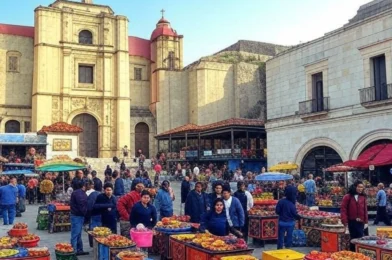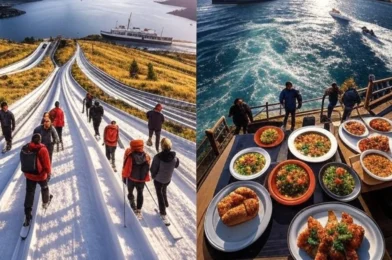Cycling as a travel style offers an intimate, active way to experience the world, blending physical challenge with breathtaking scenery. From the rolling vineyards of Tuscany to the coastal paths of New Zealand’s South Island, cycling lets you cover distances at your own pace, stopping to savor local life or stunning vistas. It’s an eco-friendly, health-boosting alternative that connects you deeply with your surroundings.
This isn’t just exercise; it’s a journey of immersion and empowerment. The whir of tires on pavement, the rush of wind against your face, the taste of fresh air after a climb—cycling travel is both invigorating and grounding. Whether you’re a fitness enthusiast seeking a challenge or a leisure rider chasing scenic routes, this style offers freedom and discovery. Let’s explore how to embark on a cycling adventure and uncover a way to turn it into a profitable pursuit.
Gearing Up: Preparing for Your Cycling Journey
A well-prepared cycling trip ensures safety and enjoyment. Here’s how to gear up.
Mapping Your Route: Selecting Routes and Bikes
Choosing Your Path: Matching Routes to Skill Level
Choose routes that match your skill level—France’s Loire Valley for flat ease, or Colorado’s mountain trails for a challenge. Research with apps like Komoot or Bikemap, considering distances and terrain.
Finding Your Ride: Selecting the Right Bike
Rent a hybrid or touring bike or invest in your own, ensuring it fits your body and load capacity for panniers.
Packing Your Essentials: Gear and Comfort
Packing Light: Essential Gear for the Road
Pack light—panniers or a backpack hold essentials: helmet, repair kit, multi-tool, lock, and rain gear.
Dressing for Success: Clothing and Comfort
Wear moisture-wicking clothing, padded shorts, and gloves; bring a spare tube and first-aid basics. A GPS device or phone mount aids navigation.
Ensuring Safety: Training and Precautions
Staying Safe: Visibility and Protection
Wear a helmet and high-visibility gear, especially at dusk.
Building Endurance: Training and Preparation
Train with 2-3 rides weekly, building endurance over 1-2 months. Learn basic repairs via YouTube tutorials. Share your route with someone and carry emergency contacts.
The Cycling Experience: Active Exploration and Connection
Cycling opens a world of active exploration and local connection.
Exploring Scenic Routes: Stops and Discoveries
Iconic Paths: Riding Through Beautiful Landscapes
Pedal through iconic paths like the Danube Cycle Path or Vietnam’s Ho Chi Minh Trail.
Local Flavors: Stops for Culture and Refreshment
Stop at villages for coffee, markets for snacks, or parks for picnics. These breaks enhance your journey with authentic flavors and sights.
Engaging with Locals: Cultural Immersion
Connecting with Community: Local Interactions
Chat with locals at roadside cafes or ask farmers about their fields.
Joining Groups: Guided Rides and Community
Join cycling groups via Meetup or local tourism boards for guided rides, fostering community.
Embracing the Pace: Slow Travel and Discovery
Noticing Details: Slow Travel Advantages
Cycling’s slow speed lets you notice details—wildflowers, wildlife, or a distant church.
Flexibility: Adjusting to the Journey
Adjust daily goals based on weather or energy, savoring the freedom to linger or push.
Turning Pedals into Profit: Online Fitness Coaching
One profitable way to earn money while cycling is by offering online fitness coaching.
Setting Up Your Business: Getting Started with Coaching
Creating Content: Sharing Your Expertise
Start with a smartphone or laptop to record content—film your rides, sharing tips on posture, endurance, or route planning.
Building Credibility: Certification and Platforms
Create a profile on platforms like Zoom or CoachNow, offering personalized plans. Certify with online courses to build credibility.
Building Your Client Base: Monetizing Your Skills
Marketing Your Services: Reaching Cycling Enthusiasts
Market to cycling enthusiasts via Instagram or YouTube with relevant hashtags.
Offering Services: Sessions and Courses
Offer one-on-one sessions or group classes. Sell pre-recorded video courses on platforms like Teachable.
Maximizing Your Income: Expanding Your Reach
Collaborations: Partnerships and Reviews
Collaborate with cycling brands for sponsored gear reviews or affiliate links.
Live Events: Webinars and Rides
Host live rides or webinars, charging admission.
Practical Strategies: Profitable Cycling Adventures
Turn your cycling journey into a sustainable venture with these strategies.
Content Creation: Recording on the Go
Filming Rides: Capturing Scenery and Technique
Use a chest or handlebar mount to film rides safely—focus on scenery and technique tips.
Editing and Sharing: Engaging Your Audience
Edit during rest days at hostels or cafes with Wi-Fi. Share short clips daily to engage followers.
Networking: Connecting with Fellow Cyclists
Local Connections: Guest Coaching and Workshops
Network with local riders or tour groups for guest coaching spots, boosting visibility.
Community Engagement: Free Workshops and Testimonials
Offer free workshops at stops, gaining testimonials to attract clients.
Managing Resources: Time and Finances
Balancing Activities: Coaching and Riding
Dedicate 1-2 hours daily to coaching, balancing with riding.
Financial Planning: Covering Costs and Reinvesting
Track earnings to cover daily costs, reinvesting into longer routes.
Hidden Opportunities: Expanding Your Coaching Career
Partnering with Tourism: Guided Rides and Promotion
Local Partnerships: Guided Tours and Workshops
Offer guided rides or workshops for local tourism boards, earning per event.
Trail Promotion: Win-Win Scenarios
Highlight their trails, creating win-win promotion.
Gear Reviews: Affiliate Income and Sponsorships
Testing and Reviewing: Gear Expertise
Test and review gear on your blog or YouTube, earning affiliate income or sponsored deals.
The Perfect Synergy: Cycling and Coaching
Cycling is a journey of strength and scenery, and online fitness coaching turns it into a profitable mission. The physical demands of pedaling inspire fitness content, while diverse routes provide real-world examples. Whether you’re coaching from a mountain pass or a coastal path, this travel style offers health and wealth in harmony.
Ready to pedal and profit? Start planning your cycling adventure and coaching career today.









